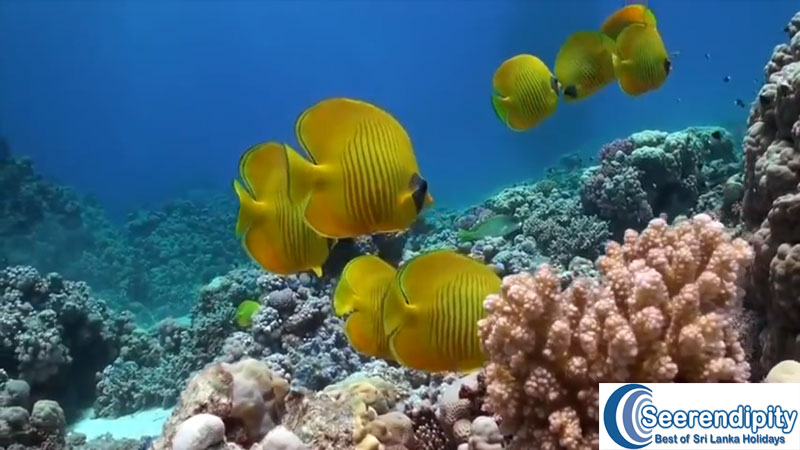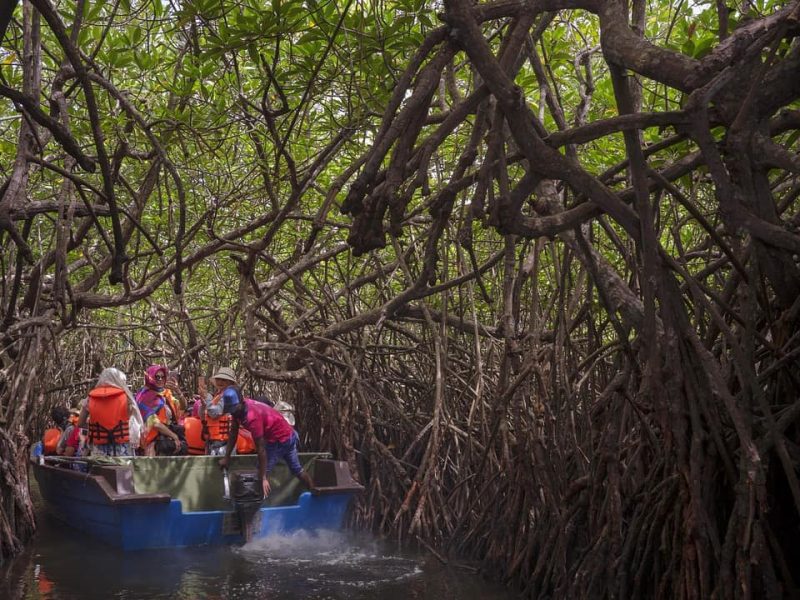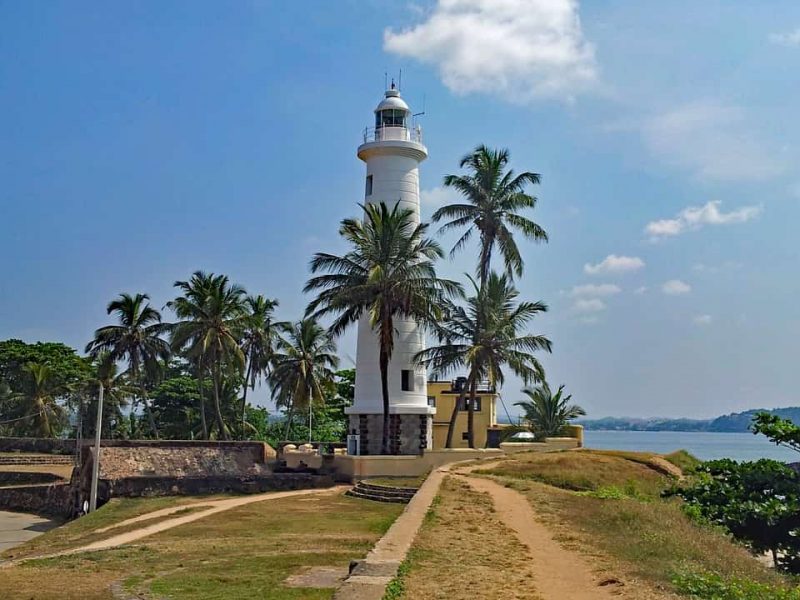What To See in Galle On A Galle Sightseeing Tour
What To See in Galle On A Galle Sightseeing Tour
Galle is the capital of southern Sri Lanka, all across this southern Sri Lankan city, colonial styles mansions, pristine beaches and extensive green cover make for a land of beautiful, fruitful expanses and endless possibilities for adventure. Therefore, Galle is a popular holiday destination in Sri Lanka and a large number of travelers venture on Galle one day tours every day.
What are the 9 important places to visit on a Galle sightseeing tour?
- Galle Dutch Fort
- Lace weaving centre
- Endangered sea turtle conservation project
- Hikkaduwa marine sanctuary
- Madu River safari
- Whale Watching
- Galle Maritime museum
- The Dutch Reformed Church of Galle
- Martin Wickramasinghe folk museum
What to see in Galle?
- Galle Fort
- Jungle Beach
- Rumassala
- Galle city
- Galle harbour
- Galle Turtle conservation project
- Japan peace Dagoba
- Unawatuna beach
You might be wondering what to see in Galle before venturing on a Galle sightseeing tour after all that’s why you landed on this page. Galle offers a wide range of interesting places to visit such as beaches, rivers, lakes, pristine patches of forests, bays, historical monuments, diving sites, places for snorkelling and many many more.
Galle sightseeing tour: The best way of exploring Galle
Venturing on a Galle sightseeing tour is the best way to explore this charming, colonial city that majestically stands along the south-west borders of Sri Lanka.
This is the best answer for your question, what to see in Galle because this one day tour allows you to see many interesting places in Galle such as Galle Fort, which is the best-preserved colonial city in Asia while exploring other attractions in southern Sri Lanka.
Importance of Galle to Sri Lanka
Galle is a major city in southern Sri Lanka and can be easily reached by bus or train. For tourists who are staying on the west coast beaches like Bentota, it is just a matter of 1 hours journey to reach the city of Galle. Despite the well developed public transport facilities it is highly recommended to hire a taxi to get the most out of your Galle sightseeing tour. Hiring a well-experienced driver/guide makes it easy to find the attraction and save time along the way.

Galle Fort: most important highlight of Galle sightseeing tour
The most important attraction on a Galle sightseeing tour is undoubtedly is the Galle Fort. The fort majestically sits on the western corner of the city, between Galle cricket stadium and the Ocean. It occupies a considerable portion of the city and adds historical value to the city.
Galle Fort is the oldest city built by European colonial rulers in Asia. The origin of fort goes back to the 1505 and it was occupied by Portuguese, Dutch and colonial rulers. The fort was given a complete facelift during the Dutch colonial era. Today it is declared as a world heritage site and possess a large number of Dutch styled buildings.
Galle Fort rampart
Galle fort rampart spreads over about 10 km around the Fort. Galle fort Rampart is a beautiful, public outdoor area with sea wall and land wall. More than half of the Rampart spreads along the beach while the rest of the rampart is facing the Galle city. Rampart is a place to meet hordes of local and foreign travellers, it is pouring with visitors at any time of the day. The walk along the rampart gives an opportunity to enjoy a breathtaking view of the Indian Ocean as well as the city and cricket stadium.
Some areas of the rampart are very broad and paved with grees, these places has been turned to the playground by the visitors. A large number of children gathering to these open areas to play cricket, football, rugger as well as jogging, running and other fat-burning activities.
Lace production: native industry to Galle
Lace is a locally manufactured textile and the technique of weaving lace is a colonial heritage of women in Galle. It can up to six months to create an intricately designed blouse. This is a region-specific clothing manufacturing technique handed down from generation to generation. There is a huge range of wooden masks, animal figures, wood carvings and other trinkets to be sold here. To find something with modern with Sri Lanka style, drop into one of the textile shops in the fort, all of them selling trendy fashion designs.

Visiting Turtle conservation centre on a Galle sightseeing tour
The turtle hatchery is an important stop for any of the trips along the border of western Sri Lanka. There are several turtle hatcheries in the areas of Kosgods, Ambalangoda and Galle. These are privately managed turtle conservation centres that render important duty in order to secure the existence of sea turtles on the island.
You have the opportunity to see the number of disabled animals and you may be lucky to see babies in great number that are ready to be released. Try to get there early in the morning; you may be lucky to release some babies to the sea. In the turtle centre, you are taken to separate tanks where the turtles kept. And same times, one person explains to you about the sea turtles and how they engage in the conservation effort of this endangered animal in Sri Lanka.
There are seven Marine Turtle species recorded in the world and Sri Lanka is the home for five of the seven species. Green turtles, leatherback sea turtle, olive ridley turtle, Hawksbills and Loggerheads marine turtles are the five species come to the beaches of Sri Lanka for nesting.
Turtle hatcheries are one of the most visited attractions on the west coast of Sri Lanka. Many places along the western and southern coastal belt, where sea turtle hatcheries can be seen. Sri Lanka is a home for five of the eight sea turtle species in the world, namely Loggerhead, Olive ridleys, Hawksbill, Green and Leatherback turtles.
The conservation effort of Sea turtles in Sri Lanka is dating back to the 1970s. According to the information, the first sea turtle conservation centre was started in 1978 in Kosgoda. The conservation centres are rendering a very valuable service in the effort of conserving this endangered marine animal in Sri Lanka. Other than being a breeding ground for sea turtles, they are also engaged in protecting the handicapped animals.
The sea turtle conservation centres are located along the beaches and many of them were completely destroyed during the Tsunami of 2004. Today, after many years of the natural catastrophe, they have revived the effort of conservation of this rare marine animal again.
Don’t forget to visit one of the turtle conservation centres if you travel to the west coast of Sri Lanka. Tourists are charged a nominal fee for visiting these places. Visitors are not only having the opportunity to see sea turtles in different ages but also can learn the lifestyle, living habitats and how to help the effort of conserving sea turtles here. Following are some of the images taken at a turtle conservation centre in Kosgoda, Sri Lanka.

Exploring marine sanctuary Hikkaduwa on Galle sightseeing tour
A glass-bottom boat tour at the Hikkaduwa marine sanctuary is also included in this Galle sightseeing tour. The shallow waters of Hikkaduwa harbour a large number of coral reefs, exotic fish species and sea plants. Therefore a boat ride is well worth in a glass-bottom boat. You can hire a boat for a few dollars and a one-hour boat ride gives you the opportunity to see part of the fascinating underwater world of Sri Lanka.

Madu river safari on Galle sightseeing tour
Madu Ganga is the 2nd largest wetland in the country. It is located near Galle and visited by a large number of people every day. This is declared as a Ramsar wetland due to its importance for the global environment. One can see a large number of mangrove species, fish species and aquatic bird species here. There is a large number of islands within the borders of the wetland and they are inhabited by a large number of people. You have the opportunity to visit one of the islands and see the lifestyle in these solitude islands.
Whale watching and Surfing on Galle sightseeing tour
Mirissa is Sri Lanka’s whale-watching capital – a laid-back beach town with thriving fishing and tourism industry. A large number of boat operators offer tours in search of these giants, blue whales, humpback whales and sometimes dolphins.
Surfing is a popular water sport along the south-west beaches of Sri Lanka, from Galle to Matara, where a large number of surf enthusiasts gather every year to balancing themselves on these rolling waves. Places like Narigama, Midigama, Unawatuna, Weligama and Ahangama are the most popular beach resorts with the best conditions for surfing.
These are the leading activities of this Galle sightseeing tour. Some other optional activities such as visiting stilt fishermen, moonstone mine, cinnamon plantation, batik factory and mask museum can also be included in the Galle sightseeing tour.
What to see in Galle -the maritime archaeological museum
The Galle city in southern Sri Lanka is the location for the largest maritime museum in Asia. The museum is housed in the Dutch storage premises of the colonial city that built-in 1676 by the Dutch administration. It occupies four spacious chambers in the Dutch storehouse (40,000 square feet) and the present museum was established in 2008.
What can we see in the maritime museum?
Large numbers of items with archaeological importance are stored in the museum. Some of them are of the high importance that recovered from the seabed off the sea of Galle. Sri Lanka had been a popular port of call in the region and sea of the island is scattered with a large number of ships wrecks.
One of the most important exhibits of the museum is a diorama of historical inhabitants in Hambantota district. They believed to be lived about 7000 years earlier. Another valuable artefact is a tri-lingual stone inscription that is written in Chinese, Tamil and Persian languages. It believed to be written 600 years earlier in China and later brought to the island.
It also shows the methods of traditional fishing, fishing gears and fishing vessels of the country. Some of the articles among the exhibits are ropes used in vessels, old canons, porcelain items, smoking pipes, maps, and shipwrecks. A valuable artefact of the museum is the model of ship Avondster (evening star) that sank in the port of Galle. The model of the ship and the artefacts recovered from the ship can be witnessed in the museum. The ship has perished in 1659 AD.
Galle maritime museum was established by the Central Cultural Fund of Sri Lanka under the conservation program of the Galle world heritage site. The museum showcases the cultural and religious aspects of the people of southern Sri Lanka. It gives an idea of the convergence of Sri Lankan culture, trade, language and tradition with the other foreign nations.
Importance of maritime museum
One of the important functions of the museum is educating the people on the fragile maritime ecosystem of the sea. It shows a specimen of a large number of sea creatures such as fish, corals, seagrass and algae. One can see the causes of sea pollution and coastal erosion and precautions that one need to observe to stop the destruction.
One can visit the laboratory of the archaeological museum and witnessed the process of conservation of items with historical value. It provides a rare opportunity of acquiring hands-on experience of conserving items in a laboratory. The historical value of the artefacts represents the period from 8000 B.C to the present millennium.
The Dutch Reformed Church of Galle
In the Galle fort sits the Dutch Reformed Church, which is another archaeological masterpiece dating back to more than 2 centuries, and one of the major tourist places in Galle Sri Lanka. Even though there are many historical attractions in the city, the Dutch Reformed Church is a must visited place among all of them due to the unique architecture and antiquity of the Church.
The fort of Galle Sri Lanka, which is located bordering the Indian Ocean on one side and sitting on a piece of land penetrated into the ocean, is the proud owner of this historical church. The fort is located at the highest point of the city which, looks over the town.
What can we see in the Dutch Church?
The church is located towards the southern end of the fort near the Galle maritime museum. It commands the awe-inspiring sight over the Indian Ocean and historic port of Galle. Several families still come to the old protestant church on Sundays for the weekly sermon. They worship before the rare, more than 200 years old spiritual objects hang on the wall. The church was built by Dutch East Indian Company. This is one of the oldest functioning Protestant churches in the country.
The history of dutch Church
The beginning of the church goes back to the Dutch colonial period. Another church, which belongs to the same religion, can be found in Colombo and it is known as the Wolvendaal church. These churches are two of the most ancient churches in the island.
Dutch Reformed church is housed in a building that built after the typical Dutch architecture. The church had been drawing a large number of devotees for many years during the Dutch period in Sri Lanka. But since the end of Dutch colonial rule in the island, the number of devotees of the religion was drastically reduced. Today only several dozens of families believe in this religion.
Dutch Reformed church is a leading tourist attraction in the fort of Galle. Galle Fort is one of the most historic parts of the city and declared as a world heritage site by UNESCO. Today the Church draws very few local people but it is visited by hundreds of thousands of tourists every year.
The Dutch Reformed church is not huge inside and there are certainly bigger churches in the city. One unique feature of the church is the gravestones of late Dutch East India Company servants. Nearly half of the floor is built over many dozens of gravestones.
The church still looks very antiques with its old-style building and antique furniture. Chairs and other furniture are made of valuable hardwoods such as ebony. Most of the furniture and woodworks are dating back to the 17th and 18th century. the collection of furniture is a remarkable and veritable treasure of the church.
The church is an archaeologically protected monument on the island and it is under the purview of the archaeological department. The Dutch Reformed Church of Galle is one of the oldest Protestant churches in the country. The church is built after the Doric style of the period, in the form of the Greek cross with several feet thick wall. The transepts are roofed with brick barrel arches and a central dome.
Martin Wickramasinghe folk museum
Martin Wickramasinghe folk museum is one of the most visited tourist attractions in Sri Lanka offering the possibility to explore the rich historical past of Galle and suburb, and it is a must-see attraction in Galle. It is a place to see typical ancient farming practices, fishing methods, hunting methods and many other cottage industries. The museum has a large collection of bullock carts known as “Thirikkala”, which functioned as the main transport method of southern Sri Lanka in the past.






